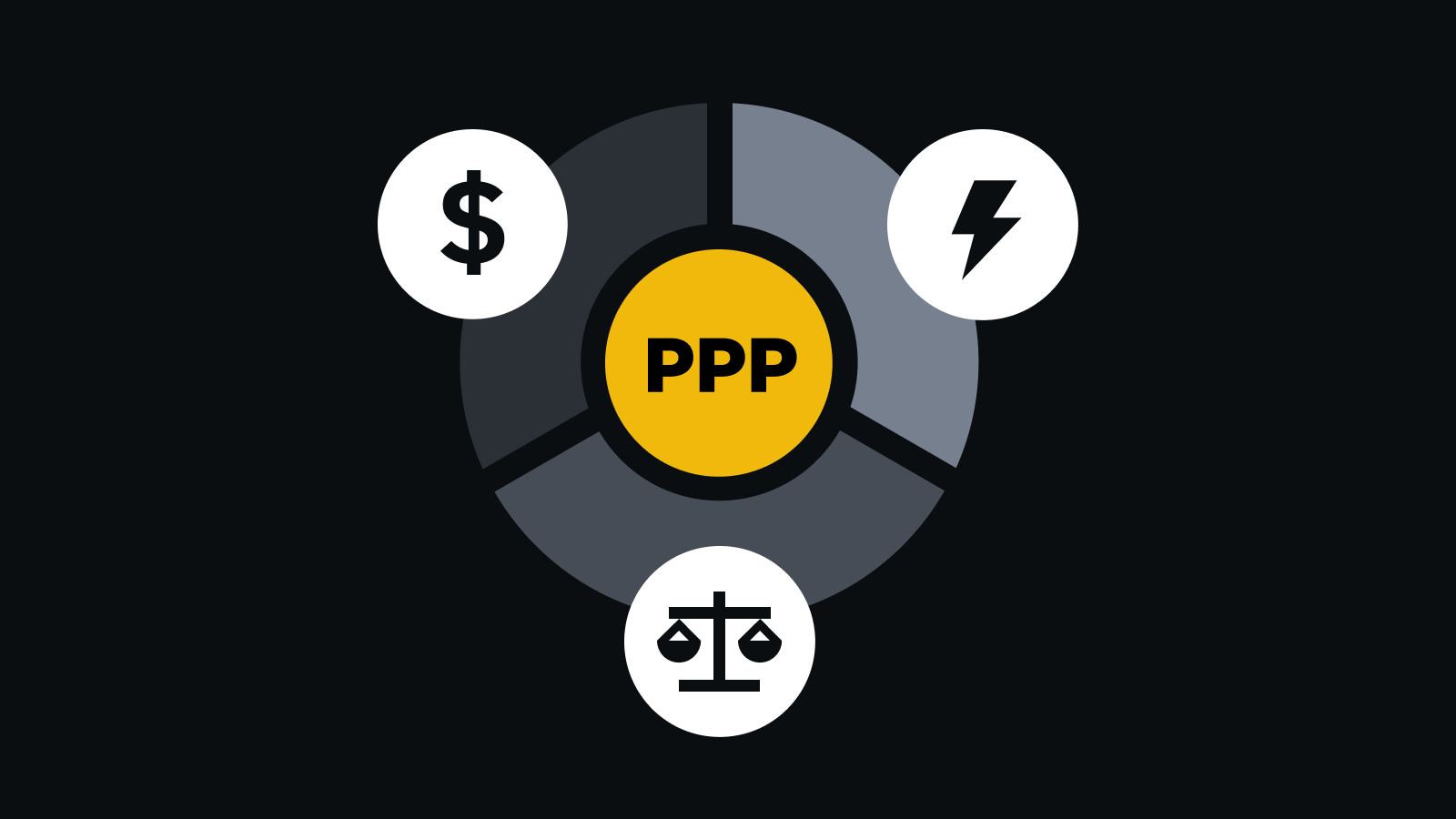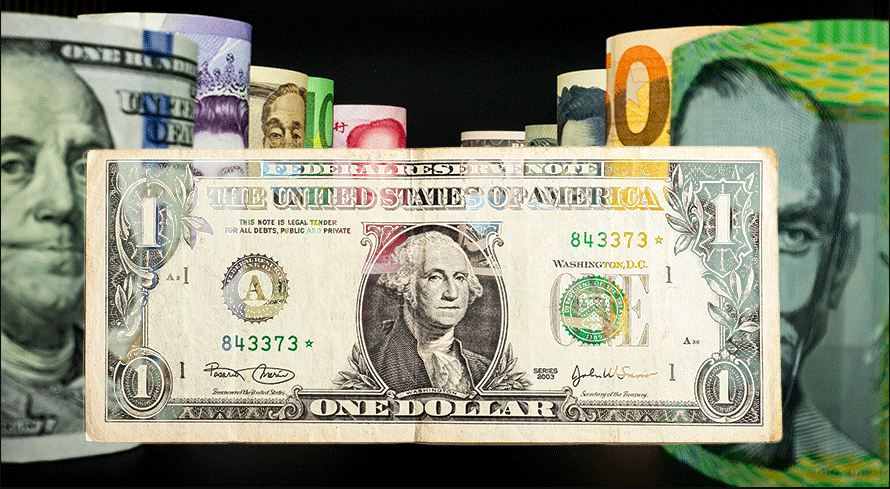As of late 2025, the US dollar still has significant purchasing power across global markets. However, its strength fluctuates significantly because of exchange rates, inflation, economic stability, and geopolitical influences.
Understanding where the dollar stretches the farthest can guide traders, investors, and businesses seeking optimal value and cost efficiency.
This guide incorporates the latest exchange and PPP rates, includes recent trends such as Iran's upcoming currency redenomination, and highlights real-use black market rates where official figures diverge.
Understanding Dollar Strength: Exchange Rates vs. Purchasing Power

Before delving into the list, it's essential to distinguish between two key concepts:
Exchange Rate: The value of one currency for conversion to another. A higher exchange rate means receiving more foreign currency for each US dollar.
Purchasing Power Parity (PPP): An economic theory that compares different countries' currencies through a "basket of goods" approach. It indicates how much a currency can buy goods and services in another country.
While exchange rates offer a direct comparison, purchasing power parity provides a more detailed understanding of the dollar's value across different economies.
Where Is the US Dollar Worth the Most in 2025? Top 16 Countries
| Rank |
Country |
Current Rate (1 USD =) |
6-Month Low (Weakest USD)
|
6-Month High (Strongest USD)
|
Notes on Dollar Strength & Market Conditions |
| 1 |
Lebanon |
≈ 90,001 LBP |
~85,000 LBP (official) |
120,000+ LBP (black market) |
Official rate stable; black market shows extreme dollar strength due to crisis |
| 2 |
Vietnam |
≈ 26,404 VND |
~26,018 VND |
~26,554 VND |
Controlled rate; minimal fluctuation, high real purchasing power |
| 3 |
Indonesia |
≈ 16,592 IDR |
~15,475 IDR |
~16,675 IDR |
Steady depreciation trend; dollar strong in tourism and real estate |
| 4 |
Nigeria |
≈ 1,470 NGN |
~1,464 NGN |
~1,550 NGN (parallel market) |
Black market premium persists due to forex scarcity |
| 5 |
Argentina |
≈ 1,427 ARS |
~1,271 ARS |
~1,478 ARS |
Official rate diverges sharply from informal “blue dollar” market |
| 6 |
Hungary |
≈ 336.24 HUF |
~328 HUF |
~348 HUF |
Forint weakened in early 2025; recent stabilization near 335 |
| 7 |
Japan |
≈ 152.3 JPY |
~140.90 JPY |
~158.35 JPY |
Yen weakest in early 2025; slight rebound in Q3, but still dollar-favorable |
| 8 |
Iceland |
≈ 121.6 ISK |
~120.5 ISK |
~131.0 ISK |
Króna volatile; dollar purchasing power improved in Q4 2025 |
| 9 |
India |
≈ 88.74 INR |
~87.16 INR |
~89.40 INR |
Rupee hit record low in Sept 2025; dollar now buys more than ever |
| 10 |
Pakistan |
≈ 282.20 PKR |
~282.16 PKR |
~288.5 PKR |
IMF support stabilized PKR, but dollar remains strong in retail |
| 11 |
Egypt |
≈ 47.56 EGP |
~47.56 EGP |
~51.66 EGP |
Float policy led to depreciation; dollar dominates high-value transactions |
| 12 |
Turkey |
≈ 41.68 TRY |
~34.18 TRY |
~41.72 TRY |
Lira hit new lows in August; dollar strength remains high |
| 13 |
Mexico |
≈ 18.39 MXN |
~18.24 MXN |
~21.17 MXN |
Peso stable; dollar strong in tourist zones and border cities |
| 14 |
South Korea |
≈ 1,413 KRW |
~1,373 KRW |
~1,461 KRW |
Won weakened in Q3; dollar buys more electronics and services |
| 15 |
Australia |
≈ 1.523 AUD |
~1.496 AUD |
~1.679 AUD |
AUD weakened due to China slowdown; dollar strong in travel and education |
| 16 |
Iran |
≈ 42,075 IRR (official) |
~40,000 IRR |
60,000+ IRR (black market) |
Sanctions drive massive black-market spread; redenomination planned |
1. Lebanon
Exchange Rate (Official): 1 USD = 90,001 Lebanese Pounds
Black Market Rate: Up to 120,000 LBP in recent weeks
The Lebanese economy remains under severe distress, with hyperinflation and political instability pushing the Lebanese pound to historic lows. The US dollar dominates daily transactions, often trading at a significant premium on the black market.
2. Vietnam
Exchange Rate: 1 USD = 26,404 Vietnamese Dong
Six-Month Average: 26,206 VND
Vietnam maintains a managed exchange system with a generally weak dong to support exports. The low cost of living and steady dong depreciation make the dollar notably expensive for visitors and investors.
3. Indonesia
Indonesia's weakened rupiah benefits its export competitiveness. Inflationary pressures and trade deficits keep the rupiah at lower levels, where the dollar provides considerable leverage.
4. Nigeria
Exchange Rate (Official): 1 USD = 1,470 Naira
Black Market Rate: 1,550 Naira
Fluctuations in oil prices, inflation, and a lack of foreign reserves have depreciated the naira.
The dollar serves as a favoured medium for value storage and transaction, particularly for high-end imports and real estate.
5. Argentina
Persistent inflation and fiscal challenges have weakened the Argentine peso. Parallel markets greatly prefer the US dollar for both savings and trade, demonstrating widespread confidence in the greenback compared to local currencies.
6. Hungary
The forint struggles amid regional inflation and geopolitical unease. The US dollar's strength benefits local investors seeking safe-haven currency options.
7. Japan
Japan's ultra-loose monetary policy and low interest rates have contributed to its weakness. In 2025, growing rate differentials between the US Federal Reserve and the Bank of Japan have elevated the dollar's appeal for investors.
8. Iceland
Iceland's modest economy, reliant on tourism and fishing, experiences a fluctuating króna. The stronger dollar reduces travel and import costs for Americans visiting or investing.
9. India
Inflationary forces and trade deficits dampen the rupee's worth. The local economy's stability and the central bank's policies contribute to an environment where the USD remains strong and widely used. [1]
10. Pakistan
Even with controlled inflation and backing from the IMF, external disparities continue to weaken the Pakistani rupee. The strength of the dollar presents both opportunities and risks in this developing market.
11. Egypt
Currency float policies and IMF reform measures have contributed to the persistent decline of the pound, solidifying the US dollar's supremacy in import costs and savings.
12. Turkey
Aggressive monetary policies and inflation have greatly weakened the lira. The US dollar's value helps Americans enjoy more purchasing power in Turkey despite local economic uncertainties.
13. Mexico
Close economic ties to the US and a weak peso maintain a strong dollar in border and tourist areas. Mexico's stable economy continues to rely heavily on exports to the US.
14. South Korea
Global market fluctuations and worries over export growth impact the won. Interest rate differentials keep the US dollar comparatively stronger.
15. Australia
A decline in resource demand growth and reduced rates compared to the US have weakened the Australian dollar.
16. Iran
Official Exchange Rate: 1 USD = 42,075 Rial
Black Market Rate: 60,000+
Sanctions and internal turmoil depress Iran's official currency.
A proposed government initiative to remove four zeros from the Rial could significantly alter the official and market rates. Yet, the dollar's dominance is expected to remain. [2]
Why the Dollar Remains Strong and What to Watch

The global reserve currency position of the US dollar, supported by the size of the US economy and the depth of its markets, sustains its strength. Monetary policy divergence between the US Federal Reserve's rate hikes and looser policies in other economies further elevates the dollar's attractiveness.
For investors, understanding the differences between black market and official rates, local inflation trends, and geopolitical events is essential for evaluating the true value of the dollar.
In countries like Lebanon, Iran, and Nigeria, where formal and informal rates vary vastly, dollar usage in daily life exceeds formal currency exchange rates. At the same time, countries backing exports with weaker currencies maintain structural dollar strength.
Frequently Asked Questions
Q1: Why Is the US Dollar Stronger in Some Countries Than Others?
Dollar strength varies due to local currency depreciation from inflation, political instability, monetary policy divergence, and trade imbalances. Countries with weak or depreciating currencies, such as Lebanon, Argentina, and Nigeria, offer the dollar more purchasing power.
Q2: How Does Purchasing Power Parity (PPP) Differ From Exchange Rates in Measuring Dollar Strength
Exchange rates show nominal currency conversion, while PPP compares the actual cost to buy a standardised basket of goods.
Q3: What Causes Black Market Currency Rates to Differ Significantly From Official Exchange Rates?
Black market rates emerge from capital restrictions, shortages of foreign currency, or economic sanctions that restrict formal access to dollars, creating a premium on the dollar in unofficial markets.
Q4: Is the Dollar Expected to Remain Strong Across These Countries in Late 2025 and Early 2026?
Yes, unless major geopolitical shifts or policy changes occur, the dollar is expected to maintain strength due to ongoing global economic disparities and monetary tightening differentials.
Conclusion
In 2025, the US dollar remains the most powerful in economies with weak or unstable local currencies.
In contrast, the US dollar benefits from being the world's reserve currency, backed by the size and stability of the US economy, and used in international trade and finance. As long as these disparities remain, the dollar will retain, and in many cases, grow, its value in weaker economies.
Disclaimer: This material is for general information purposes only and is not intended as (and should not be considered to be) financial, investment or other advice on which reliance should be placed. No opinion given in the material constitutes a recommendation by EBC or the author that any particular investment, security, transaction or investment strategy is suitable for any specific person.
Sources
[1] https://www.reuters.com/world/india/soaring-dollar-puts-all-time-low-peril-traders-eye-rbi-defence-2025-10-08/
[2] https://www.reuters.com/world/middle-east/iranian-parliament-approves-currency-redenomination-2025-10-05/























